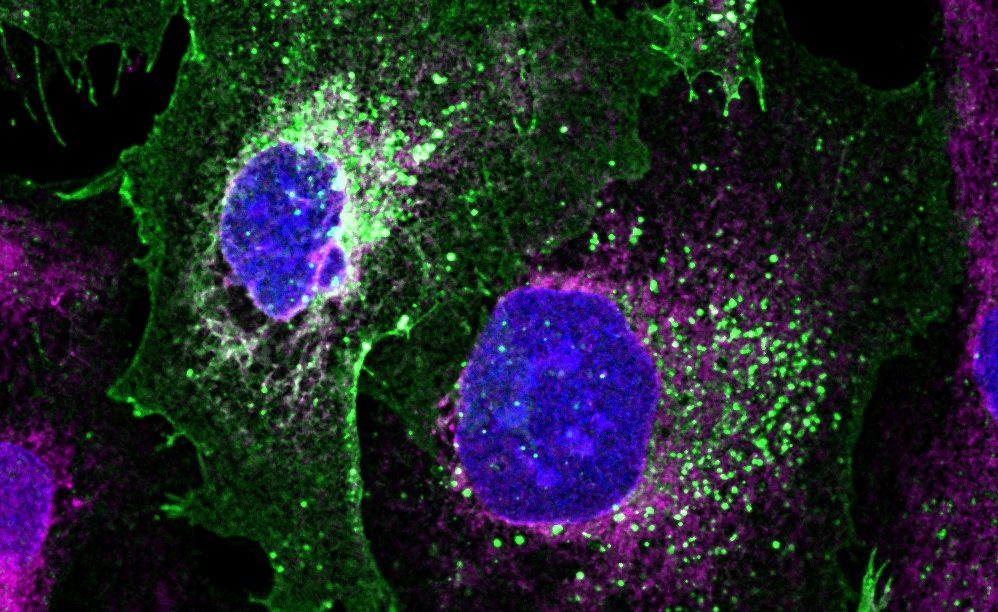Some of the newest and most exciting gene therapy technologies share a problem: They’re too bulky. They rely on multiple functional DNA and protein elements that must reach target cells all at the same time, even though they have trouble fitting into the usual delivery vehicles, which include vector systems based on lentiviruses, adenoviruses, and adeno-associated viruses. To create a more capacious delivery system, scientists based at the University of Bristol turned to a rod-shaped baculovirus. As a gene therapy vector, the baculovirus offers a valuable trait: It simply becomes longer to accommodate larger gene therapy cargoes.
The scientists, who were led by Bristol’s Francesco Aulicino, PhD, and Imre Berger, PhD, recently presented their baculoviral delivery system in the journal Nucleic Acids Research, in a paper titled, “Highly efficient CRISPR-mediated large DNA docking and multiplexed prime editing using a single baculovirus.” The paper described how a baculovirus was engineered so that it could enter human cells efficiently. (Baculoviruses, which typically infect insect cells, do not replicate in human cells.) The paper also presented evidence that the engineered baculovirus delivered gene editing materials to correct a genetic defect in kidney podocytes derived from patients with steroid-resistant nephrotic syndrome (SRNS).
“[We] deploy a single baculoviral vector encoding all the required components, achieving high-efficiency homology-independent targeted integration [and] single and multiplexed prime editing in a range of human cell lines,” the paper’s authors wrote. “By achieving site-specific integration of very large DNA payloads and multiplexed-prime-editing-mediated trinucleotide insertion at four different loci, we unlock baculovirus as a vector of choice for next-generation genome engineering approaches.”
“By encoding Cas9, sgRNA, and donor DNAs on a single, rapidly assembled baculoviral vector, we achieve with up to 30% efficacy whole-exon replacement in the intronic β-actin locus, including site-specific docking of very large DNA payloads,” the article’s authors detailed. “We demonstrate single baculovirus vectored delivery of single and multiplexed prime-editing toolkits, achieving up to 100% cleavage-free DNA search-and-replace interventions without detectable indels.”
Previously, the Bristol researchers developed a baculovirus-based method to infect cultured insect cells to produce recombinant proteins. This method, called MultiBac, has been widely used to make very large multiprotein complexes with many subunits.
The MultiBac method, Berger noted, “already exploited the flexibility of the baculovirus shell to deliver large pieces of DNA into the cultured insect cells, instructing them to assemble the proteins we were interested in.” When the scientists realized that the same property could potentially transform gene therapy in human cells, they went to work to create their new system described in the new paper.
“What sets apart baculovirus from lentivirus, adenovirus, and adeno-associated virus is the lack of a rigid shell encapsulating the cargo space,” Aulicino remarked. “There are many avenues to utilize our system. In addition to podocin repair, we could show that we can simultaneously correct many errors in very different places in the genome efficiently, by using our single baculovirus delivery system and the most recent editing techniques available.”
The scientists emphasized that the rapid evolution of CRISPR-based genome engineering approaches is lending more urgency to the need for next-generation viral delivery vector systems that offer better cargo capacity, efficiency, and safety than today’s state-of-the-art delivery systems. The need, the scientists added, is particularly urgent for in vivo applications, as opposed to applications in cultured cells. (The viral titer required for successful co-transduction in vivo will likely dampen gene editing efficiency.)
The scientists acknowledged that challenges remain for both ex vitro and in vivo baculovirus-based gene delivery and editing approaches. Nonetheless, the scientists also indicated that ways of overcoming these challenges are already being explored.
“Histone deacetylase inhibitors and small molecule STING antagonists have been used with varying degree of success to counteract these challenges in cultured cells,” they related. “While these molecules could theoretically pave the way for baculovirus mediated gene editing ex vivo in the future, more work will be needed to engineer baculoviral vectors suitable for efficient gene delivery in vivo. Contrary to other viral vectors, however, the large cargo capacity of baculovirus will easily enable the incorporation of transduction helper modules, pending the elucidation of the molecular mechanisms underlying their inactivation in mammalian cells.”


